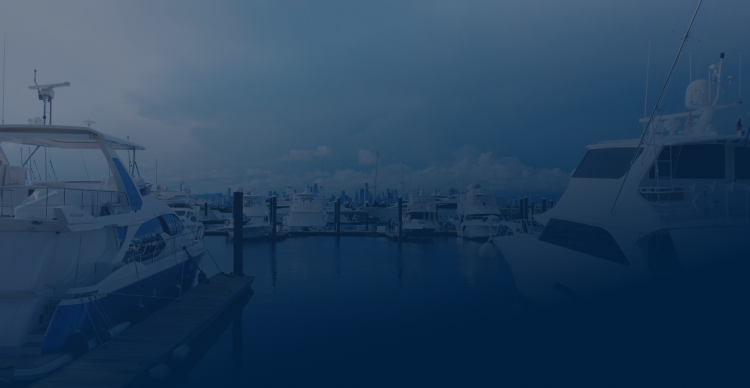A yacht sea trial isn't just a casual spin around the harbor—it's your final line of defense against risks when buying a yacht, protecting both your wallet and safety. As a broker with over a decade of experience in yacht sales and sea trial accompaniment, I've personally witnessed cases where a thorough sea trial prevented $50,000 in subsequent major repairs—it was this “diligent inspection” that saved the client from substantial losses. A sea trial should be viewed as part of the pre-purchase operational test, not merely an experiential test drive. The American Boat &Yacht Council (ABYC) also emphasizes incorporating sea trials into mandatory pre-purchase inspections in its “Surveying a Boat” guidelines.
Below is a structured sea trial checklist (15 questions) refined through years of practical experience, tailored for first-time buyers. It includes evaluation suggestions and a simple record template to help you navigate the sea trial day professionally and thoroughly.
Table of Contents:
1. Yacht Sea Trial Checklist for Buyers: 15 Must-Ask Questions
A. Yacht Sea Trial Performance Test: 5 Critical Checks
B. Yacht Sea Trial Equipment & Systems Checklist
C. 5 Key Questions on After-Sales, Documentation, and Compliance
2. How to Analyze Yacht Sea Trial Data Before Buying
3. Yacht Sea Trial Procedure On-Site Documentation Template
4. Summary
5. Frequently Asked Questions
1. Yacht Sea Trial Checklist for Buyers: 15 Must-Ask Questions
When scheduling a yacht sea trial, I divide inspections into three key modules: Performance → Systems & Equipment → After-Sales & Documentation. For each category, I record measurable metrics (e.g., RPM, noise dB, fuel consumption, engine water temperature) and capture on-site screenshots or photos for evidence—useful for future negotiations or third-party verification.

A. Yacht Sea Trial Performance Test: 5 Critical Checks
Does the acceleration curve match the projected speed?
I document the yacht's acceleration curve from idle → cruising → full speed (RPM, speed), comparing it against manufacturer specifications. Significant deviations warrant caution. Use a mobile app to record and screenshot for archiving.
Are there abnormal vibrations or noises at full speed?
Abnormal vibrations often indicate transmission system issues (universal joints, bearings, shafts) or propeller problems; unusual noises may stem from exhaust, turbocharger, or resonance issues. If necessary, record engine room videos for evidence.
Is the response smooth during idle and reverse?
Many yacht accidents and maintenance needs stem from low-speed maneuvers: record reverse gear impact and gear shift delays.
How responsive is steering and how well does it hold course?
Test yaw and rudder effectiveness during medium-speed straight runs and turning maneuvers. Autopilot deviation should remain within acceptable limits.
Is fuel efficiency and the speed-RPM curve reasonable?
Compare actual fuel consumption with manufacturer curves; significant discrepancies may indicate engine calibration, propeller, or hull resistance issues. Modern propulsion systems (e.g., Volvo Penta IPS) show notable efficiency variations—understanding manufacturer performance curves aids in determining normal operation.
Quick tip: Whether you're buyer or seller, use a mobile app to connect to gauges (or standalone GPS/current loggers) and screenshot RPM, speed, track, and wave height for post-transaction negotiations or repairs.

B. Yacht Sea Trial Equipment & Systems Checklist
Is navigation and electronics stable?
During sea trials, follow a predetermined route with autopilot engaged to record deviation and electronic alerts. Clarify electronic updates, chart versions, and AIS/radar compatibility.
Can the generator and electrical system handle domestic loads?
Simultaneously activate the yacht's air conditioning, kitchen appliances, and water heater to test generator RPM stability, temperature, and exhaust condition under load.
Do bilge/self-priming pumps and sternboard pumps operate reliably?
I routinely perform water dump tests using 20–30L buckets to observe pump activation thresholds and drainage rates—poor pump efficiency can escalate minor issues rapidly.
Does the anchor winch deploy/retrieve normally?
During deployment/retrieval, listen for torque sounds, monitor gearbox temperature rise, and inspect chain wear to determine if the windlass requires overhaul.
Do domestic systems function properly under actual use?
Turn on all yacht faucets, flush toilets, shower, and check freshwater pump pressure and sewage line flow. Attractive finishes don't guarantee system reliability—I routinely verify everything by “turning on every switch.”

C. 5 Key Questions on After-Sales, Documentation, and Compliance
The following yacht inspection checklist is not only for buyers to note but also concerns sellers: how do I sell my yacht.
Is the yacht's warranty scope clearly defined?
The power system (engine, transmission) typically involves high-value warranties or separate agreements. Obtain written confirmation of warranty terms from the seller/manufacturer.
Is the upgrade path for electronic equipment clear?
During sea trials, understanding whether equipment can be upgraded, the associated costs, and the timeframe for upgrades helps buyers avoid discovering post-purchase that “antennae or software are discontinued,” leading to outdated data.
Does the manufacturer/brand have service points in your primary cruising area?
If the buyer's primary cruising area is too distant from the manufacturer's service points, maintenance and repair costs and time will increase significantly. Authoritative classification societies or survey organizations also offer pre-purchase inspection services, serving as third-party endorsements.
Are the engine hours and maintenance records complete and transparent?
As a buyer, you may request access to the yacht's complete maintenance logs, replacement part records, and engine oil sample analyses (if available). Missing records constitute a significant basis for negotiation or withdrawal from the purchase.
Is independent third-party inspection permitted and recommended?
Independent inspection is the buyer's strongest safeguard. World-class classification societies or independent survey organizations (e.g., Lloyd's Register, RINA) can provide technical opinions and certificates, enhancing transaction credibility. If the seller refuses simultaneous third-party inspection, exercise extreme caution.

2. How to Analyze Yacht Sea Trial Data Before Buying
To ensure objectivity, I typically apply the following quantitative criteria:
Weighting of three major categories: Performance 40%, Equipment 40%, After-sales & Documentation 20%.
Example of “hard pass thresholds” (adjustable per vessel type):
Noise: ≤85dB (measured near helm at full speed)
Engine coolant temperature: Stable at 85–90°C (Does not spike after extended cruising)
Axial vibration: No persistent abnormal readings (no visual/audible/instrument anomalies)
Evaluation rule: If any category scores below 60%, immediately negotiate price or walk away. If any “major defect” exists—e.g., drive shaft issues or significant engine oil leaks—prioritize walking away or demand seller repairs with third-party inspection certification before further discussion.
I recommend researching “how much does it cost to build a yacht” to better identify problematic areas during sea trials that warrant abandoning the yacht. Negotiating with quantitative data often secures more reasonable discounts and after-sales guarantees than relying on subjective impressions.

3. Yacht Sea Trial Procedure On-Site Documentation Template
Note: Clearly document each test's data, photo ID, time, and executor. Signatures from buyer, broker, and third-party surveyor are recommended for archiving.
|
Test Item |
Data Record (Example) | Acceptance Criteria | Remarks/Photo ID |
| Maximum RPM | 3500rpm→28 kn | Factory spec ±5% | |
| Noise (Cockpit) | 82dB | ≤85dB | |
| Fuel Consumption | 58L/h @3000rpm | Factory Data ±10% | |
| Engine Room Inspection | ✅/❌ | No leaks, no overheating traces | Photo #01 |
| Bilge Pump | Start delay 2s, drains 30L/90s | Start ≤3s, normal drainage rate | Photo #02 |
| Generator Full Load Test | Stable @50Hz/60Hz | No stalling, no unusual odors | Photo #03 |
| Autopilot Course Deviation | Deviation 12m | ≤10m (depending on vessel type) | GPS Log |
During a sea trial, my client noticed a slight but persistent vibration emanating from the engine compartment when accelerating moderately to 80% throttle. We immediately recorded RPM, speed, and vibration footage, then halted the trial for an engine room inspection. Technicians discovered early wear and misalignment at the propeller shaft coupling. Had this gone undetected, subsequent replacement and realignment (including shaft seals and bearings) would have cost approximately $50,000. The client terminated the transaction and pursued another yacht model—demonstrating the immediate value of sea trials.
4. Summary
This concludes my curated yacht sea trial checklist and the 15 essential questions for first-time buyers. In summary, there are five essential things you must do during a sea trial before purchasing a yacht:
Bring tools: Smartphone/tablet (with GPS/RPM logging app), sound recorder (dB meter), camera, portable measuring cup (for bilge water testing).
Insist on independent inspection: Include “third-party inspection permitted” in the contract terms.
Document everything: Take screenshots of data, photos, and videos with clear timestamps.
Set exit clauses: Reserve the right to cancel the deposit or negotiate a price reduction if critical systems fail inspection.
Don't be distracted by aesthetics: Attractive finishes are a plus, but functionality and mechanical condition determine future costs.
5. Frequently Asked Questions
Q: What is the duration of the yacht sea trials?
A: Basic testing for small yachts takes 30–60 minutes; medium-to-large yachts require 1–3 hours including varied operational tests and anchoring trials. Comprehensive sea trials involving third-party inspectors provide greater thoroughness.
Q: How much does a yacht sea trial cost?
A: Yacht sea trial expenses vary depending on vessel type, length, power, and service scope. For small to medium-sized second-hand yachts, costs typically range from $550 to $1,650. For larger vessels or power yachts, costs may reach $1,650 to $5,500. These fees generally include fuel, crew, and technical personnel costs, which may be borne by the buyer or negotiated as a deduction from the final purchase price.
Q: Is third-party inspection mandatory for pre-purchase yachts?
A: I strongly recommend independent third-party inspection, especially for yachts over 40 feet or higher-priced vessels. Third-party reports serve as critical documentation for negotiations and insurance.
About the Author
Emery
Yacht Broker / Yacht Transaction Consultant / Contributing Writer for Yachting Magazine
SAMS Certified Surveyor No.: AMS #2458
Honored as one of “Asia's Top 10 Yachting Industry Experts” and recipient of the “Outstanding Yacht Broker Service Award”
Last Updated: November 2025
Applicable Audience: Individual buyers planning their first yacht purchase, prospective owners assessing vessel condition, yacht brokers and surveyors involved in sea trials and acceptance procedures, as well as buyers and sellers seeking to mitigate transaction risks and safeguard asset security.
Disclaimer
The yacht sea trial checklist and related recommendations provided herein are compiled by the author based on years of professional experience, intended as a reference for first-time buyers and industry practitioners. However, due to variations in yacht types, brands, and usage conditions, the content herein cannot cover all scenarios. When conducting actual sea trials and transactions, it is imperative to adapt to specific circumstances and seek advice from professional yacht surveyors, legal counsel, and other experts. The author and publisher assume no legal liability for any direct or indirect losses arising from actions taken based on the information provided in this document.



